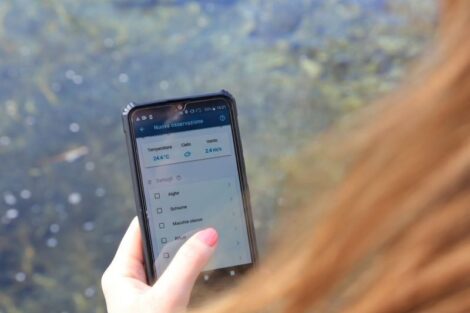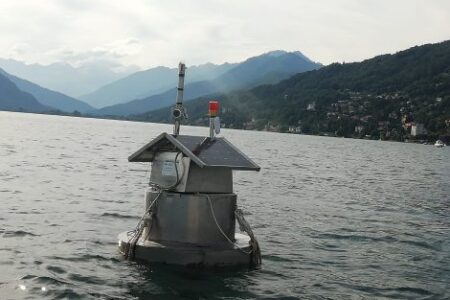Citizen science turns people into alpine lakes observers
Water is an important natural resource in the mountains. Alpine lakes provide many ecosystem services to mountain and lowland communities. However, water resources are under increasing pressure and better water management is needed. The SIMILE project promoted citizen science as a way to involve citizens in monitoring and raising awareness for better water management in mountain areas.
Water: a precious but endangered mountain resource
Many mountain lakes are under threat from human pressures and the effects of climate change, which can affect water quality and quantity. Lakes face water pollution as well as multiple and sometimes competing uses, such as agriculture or energy production. Climate change is also reducing the precipitation and snow cover that feed mountain lakes.
Yet mountain lakes are valuable natural resources and provide many ecosystem services. For example, mountain lakes provide fresh water for mountain and lowland communities. In the northern Alps for instance, Lake Constance supplies drinking water to about 4 million people in 320 towns and communities in Baden-Württemberg. The latest IPCC report also highlighted that, globally, 68% of irrigated agricultural land in the lowlands depends on significant contributions from mountain runoff.
Citizen science to support data collection
In the Southern Alps, the SIMILE project improved water monitoring through citizen science. The project aimed to improve the monitoring and management of mountain lakes, focusing on the lakes of Como, Maggiore and Lugano, and more recently Varese, located between Italy and Switzerland.
The project included a citizen science approach by involving the general public in the collection of data on the lakes. To this end, the mobile app “SIMILE Monitoraggio Laghi” was created to collect people’s observations on the state of the lakes. The app has been made available for both Android and IOS devices. It allows citizens to view content on an interactive map, send pictures and comments, and take water measurements. For example, they can note the presence of algae, foam, waste or pollutants, and measure water temperature or pH.
The data collected through the citizen science approach helps to improve water management. It complements the other two approaches used by the SIMILE project: the use of sensors and satellite maps. Various sensors are indeed placed in the lakes and allow continuous monitoring of the water.
In Lake Maggiore, for example, a buoy packed with sensors has been installed near Pallanza. It can measure pH, oxygen, chlorophyll and algal pigments. The buoy also has a weather station that monitors wind direction and speed, air temperature, solar radiation and atmospheric pressure. In addition, satellite maps provided an extra layer of information, allowing comparisons to be made over large areas.


Improved water management capacity for all
The combined use of citizen science, sensors and satellite maps has improved water management and the response capacity of the relevant authorities. For example, the use of satellite maps made it possible to circumscribe the spread of a surface foam phenomenon that occurred in Lake Maggiore in September 2019 and the presence of a cyanobacteria bloom in Lake Lugano in late 2019.
In addition, the creation of the mobile app and the citizen science approach have helped to raise awareness of the importance of Alpine lakes. For example, high school students and members of local associations have been involved and sensitised.